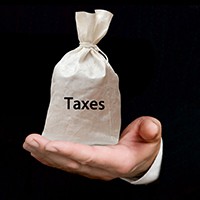Last updated: April 19 2017
14 Tax Tips for Spouses and Common-Law Partners

Whether you live in a conjugal relationship is an important tax issue, as it affects many provisions on the return. Failure to report your status properly can, in fact, lead to expensive penalties. So, if your relationship status changed in 2016, consider discussing the following checklist with your advisor. It’s a “baker’s dozen plus one,” chocked full of potential tax filing provisions for couples that can save you time and money, especially on a tax audit:
1. Spousal Amount. If the income of one spouse is less than the basic personal amount ($11,635 for 2017), then the other spouse may claim a non-refundable credit for the lower-income spouse. This credit is equal to the basic personal amount less the spouse’s net income. An additional claim is possible if the lower-income spouse is infirm. In fact, the claim in 2017 will be available for infirm spouses with income under $16,163.
2. Transfer of Tax Credits. If the lower-income spouse does not have enough income to claim all their credits, the following credits may be transferred to the higher-income spouse: the Age Amount, the Pension Income Amount, the Tuition Amount (plus Education and Textbook amount for years before 2017), and the Disability Amount.
3. Spousal RRSP. Taxpayers with available contribution room may make contributions to a spousal RRSP. The spouse is the beneficiary of the RRSP but the contributor claims the tax deduction for the contribution. When withdrawn, these contributions are taxable to the beneficiary if there are no spousal contributions in the year of withdrawal and the two years immediately preceding (and upon death of the contributor, separation, or divorce). If spousal RRSP contributions are withdrawn and contributions to a spousal plan had been made in the year of withdrawal or prior two years, the withdrawals will be taxable to the contributor.
4. CPP Sharing. CPP may be shared between spouses. To do so, apply to Service Canada to have pension entitlements earned while the couple was together shared between the spouses. Each spouse must be at least age 60 before sharing is possible.
5. Pension Income Splitting. Taxpayers who receive eligible pension income may elect to split up to half of that pension income with their spouse. Eligible pension income includes a pension from a Registered Pension Plan at any age. Most foreign pensions will also qualify. For taxpayers over age 65, pensions from RRSPs and RRIFs are also eligible pension income.
6. Guaranteed Income Supplement (GIS). The Guaranteed Income Supplement and the Spousal Allowance are based on the sum of the net incomes of both spouses and both must file a tax return or these supplements will not be paid.
7. Income Attribution and Spousal Loans. Income earned on assets transferred from one spouse to the other must be reported on the tax return of the transferor unless there is a bona fide loan arrangement in place and interest is charged at a rate of 1% or more and actually paid by the transferee on or before January 30 of the following tax year.
8. Transfer of Dividends. Where the lower-income spouse has Canadian dividend income but is not taxable, those dividends may be reported by the higher-income spouse if doing so either creates or increases a spousal amount claim.
9. Child Care Expenses. Claims for child care expenses must generally be made by the lower-income spouse unless they are unable to care for the children while attending school, infirm or incarcerated.
10. Claiming Spouse’s Relatives. Taxpayers who support infirm relatives of their spouse may be eligible to claim a personal amount for those relatives.
 |
11. GST/HST Credit. For the purposes of the Goods and Services/Harmonized Sales Tax Credit (GSTC), only one spouse may receive the credit for the family and the credit will be calculated based on the sum of the net incomes of both spouses. Both spouses must file a tax return or no GSTC will be paid.
12. Canada Child Benefit. For the purposes of the Canada Child Benefit (CCB), the credit will be calculated based on the sum of the net incomes of both spouses. Both spouses must file a tax return or no CCB will be paid.
13. Provincial credits. Most refundable provincial tax credits are allowed to only one spouse and the amount of the credit is based on the sum of the net incomes of both spouses.
14. Principal residence exemption. Remember, once you are married or living common law, only one tax-exempt principal residence can be claimed per household. Especially because the reporting rules for principal residence dispositions have changed this year, those in conjugal relationships with two or more properties may find their real estate transactions under the microscope starting in 2016 and future years.
For assistance with the complicated tax provisions that affect couples who live together, be sure to see a DFA-Tax Services Specialist™, or, if you are a financial advisor, or someone wishing to earn professional credentials to help others with this important life skill, consider taking the DFA-Tax Services Specialist™ designation program to shore up your knowledge.
©2017 Knowledge Bureau Inc. All Rights Reserved.





